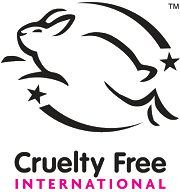Testing cosmetics on animals
Testing cosmetics on animals is a practice that involves assessing the safety and efficacy of cosmetic products and their ingredients through experimentation on animals. This method has been a subject of ethical, scientific, and regulatory debate for decades. The practice is designed to ensure that cosmetics, ranging from makeup, skincare, and hair care products, do not cause harm to humans. However, it raises significant ethical concerns regarding animal welfare and rights.
Overview[edit | edit source]
Testing cosmetics on animals involves various procedures that may assess acute toxicity, skin and eye irritation, carcinogenicity, and other health effects. Common animals used in these tests include rabbits, guinea pigs, mice, and rats. The procedures can cause the animals pain, suffering, and death, leading to widespread criticism and the push for alternative testing methods.
Ethical Considerations[edit | edit source]
The ethical debate surrounding animal testing in cosmetics centers on the balance between human benefits and animal welfare. Critics argue that subjecting animals to distress and harm for the sake of cosmetic products is morally unacceptable. Animal rights organizations, such as People for the Ethical Treatment of Animals (PETA), actively campaign against animal testing, advocating for cruelty-free products and the adoption of alternative testing methods.
Regulatory Landscape[edit | edit source]
The regulatory stance on animal testing for cosmetics varies globally. The European Union (EU) has been at the forefront of regulatory change, having banned the testing of finished cosmetic products on animals in 2004, and extending this ban to include ingredients or combination of ingredients in 2009. Furthermore, in 2013, the EU implemented a ban on the sale of cosmetics tested on animals, regardless of where the testing occurred. Other countries have followed suit, implementing similar bans or restrictions, while some still permit or even require animal testing for cosmetics.
Alternatives to Animal Testing[edit | edit source]
Advancements in science and technology have led to the development of alternative methods to animal testing. These alternatives include in vitro testing, computer modeling, and the use of human skin equivalents. Such methods can offer more ethical, faster, and sometimes more accurate results. Organizations like the European Centre for the Validation of Alternative Methods (ECVAM) are at the forefront of validating these alternatives to ensure they meet regulatory standards for safety assessment.
Conclusion[edit | edit source]
Testing cosmetics on animals is a complex issue that intersects ethics, science, and regulation. While historically it has played a significant role in ensuring the safety of cosmetic products, the ethical concerns and the development of alternative testing methods have led to significant changes in regulatory policies and industry practices. The ongoing development and validation of non-animal testing methods are crucial for the future of cosmetics safety assessment, aiming to eliminate the need for animal testing altogether.
- Need help finding a doctor or specialist anywhere in the world? WikiMD's DocFinder can help with millions of doctors!
| This article is a stub. Help WikiMD grow by registering to expand it. |
Navigation: Wellness - Encyclopedia - Health topics - Disease Index - Drugs - World Directory - Gray's Anatomy - Keto diet - Recipes
Search WikiMD
Ad.Tired of being Overweight? Try W8MD's physician weight loss program.
Semaglutide (Ozempic / Wegovy and Tirzepatide (Mounjaro) available.
Advertise on WikiMD
WikiMD is not a substitute for professional medical advice. See full disclaimer.
Credits:Most images are courtesy of Wikimedia commons, and templates Wikipedia, licensed under CC BY SA or similar.
Contributors: Prab R. Tumpati, MD

